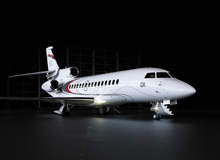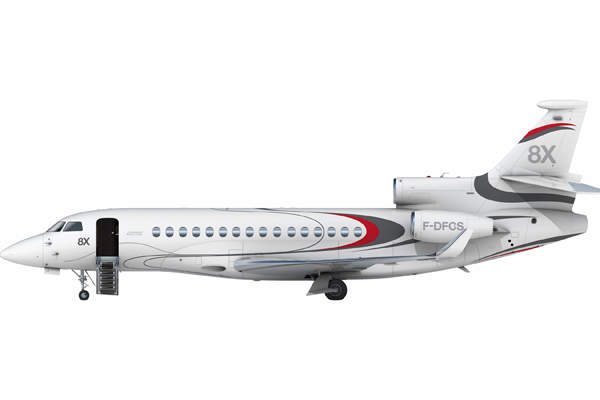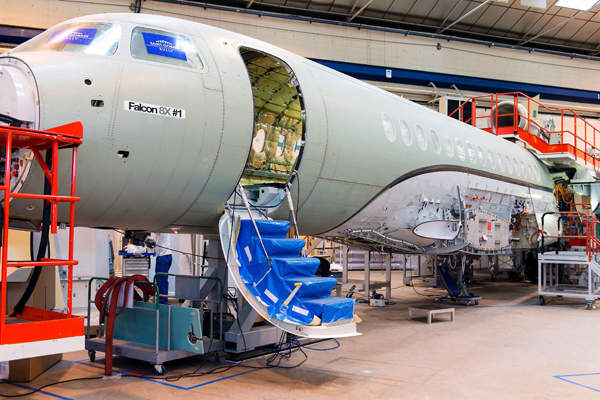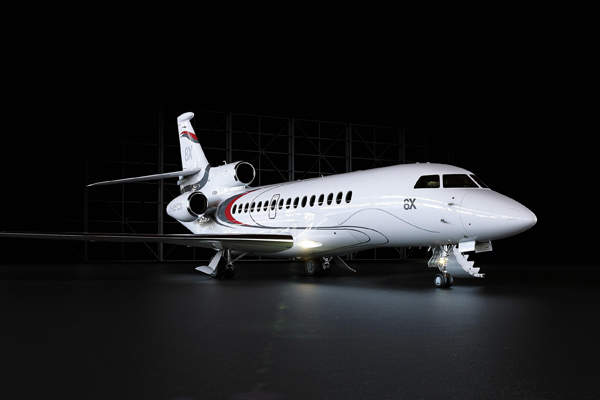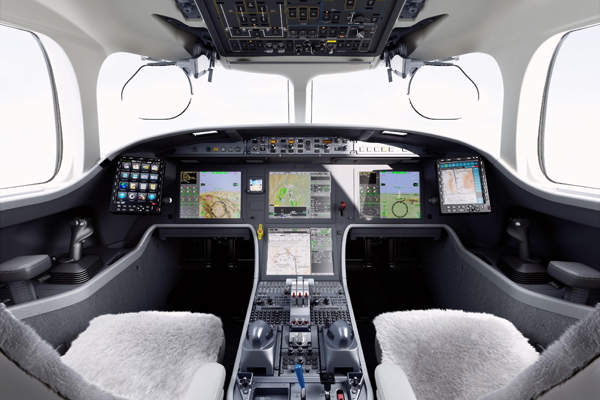Dassault Aviation unveiled the Falcon 8X, an ultra-long-range business jet in the Falcon family, at the European Business Aviation Convention and Exhibition (EBACE) held in Geneva, Switzerland, in 2016.
The Falcon 8X aircraft received EASA type certification and FAA certification in June 2016. Initial deliveries were expected to start before the end of 2016.
Serge Dassault placed an order for a Falcon 8X in May 2014, becoming the launch customer. The maiden flight of the first Falcon 8X jet was successfully conducted in February 2015.
The first airframe assembling took place at Dassault’s facility in Bordeaux, Mérignac, France.
The company expanded its Little Rock facility in Arkansas, US, to accommodate the production of the 8X and former 5X models.
Falcon 8X design features
The airframe and wing of the 8X are derived from the 7X aircraft, while the modifications to the wing structure design are aimed at lowering the overall aircraft drag during cruising.
The aircraft has an external length of 24.46m (80.2ft), height of 7.94m (26.1ft) and wingspan of 26.29m (86.25ft).
Flight deck and avionics of the jet
The Falcon 8X features a redesigned cockpit based on the Falcon 5X model. It is equipped with a third-generation EASy flight-deck avionics system, which is implemented on the hardware platform of Honeywell’s Primus Epic system. It also includes a wide-screen head-up display (HUD) integrated with synthetic and enhanced vision, as well as an optional dual HUD capability.
A next-generation 3D colour weather radar system developed by Honeywell, which is capable of providing enhanced turbulence detection, is included in the avionics.
Other avionics include three leading-edge slats, three airbrakes and two flaps. The latest generation digital-flight control technology ensures smooth and precise flight control and flight envelope protection.
Cabin details of Falcon 8X
The jet features a spacious and long three-lounge cabin that can comfortably accommodate eight passengers and three crew members. It offers a total volume of 1,695ft³ (48m³), excluding the cockpit and baggage area. The cabin length, width and headroom are 13m (42.67ft), 2.34m (92in) and 1.88m (74in), respectively.
There are 30 different cabin layouts to choose from, as well as different lavatory layouts, including a lavatory with a shower, while the galley can be chosen from three sizes, including two with a crew-rest option.
A FalconCabin HD+ cabin management system is available and is furnished with Apple devices and Skybox wireless media server, which have iTunes video and music capacity.
Engines and performance
The Falcon 8X is powered by three PW307D turbofan engines manufactured by Pratt & Whitney Canada (P&WC). These engines, certified by EASA in May 2016, provide a thrust of 29.9kN (6,722lb) each at ISA+17C conditions, delivering more pounds of thrust per each pound of fuel and emitting 30% fewer nitrogen oxides.
The aircraft can fly at a high speed of 685km/h (370k) and attain a maximum range of 11,945km (6,450nm). It has a balanced field length of approximately 6,000ft (1,829m) and maximum operating altitude of 51,000ft.
With a maximum take-off weight of 33,113kg (73,000lb) and landing weight of 28,304kg (62,400lb), the aircraft’s zero fuel weight is 18,598kg (41,000lb).
Contractors involved
DAHER-SOCATA was awarded a contract in May 2014 to design and manufacture major aerostructure components, including the upper section of the passenger cabin and the belly fairing.

